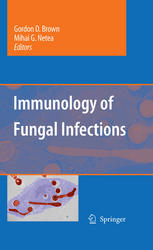

Most ebook files are in PDF format, so you can easily read them using various software such as Foxit Reader or directly on the Google Chrome browser.
Some ebook files are released by publishers in other formats such as .awz, .mobi, .epub, .fb2, etc. You may need to install specific software to read these formats on mobile/PC, such as Calibre.
Please read the tutorial at this link: https://ebookbell.com/faq
We offer FREE conversion to the popular formats you request; however, this may take some time. Therefore, right after payment, please email us, and we will try to provide the service as quickly as possible.
For some exceptional file formats or broken links (if any), please refrain from opening any disputes. Instead, email us first, and we will try to assist within a maximum of 6 hours.
EbookBell Team

4.3
98 reviewsThe history of mankind has been shaped by infections, more than by war and famine together. At the same time, however, the development of society has had an equally important effect on human diseases. The emergence of agriculture, urban societies and high population densities has been proven to be crucial for the spread of pathogens, and thus human action is currently the single most important driver of infectious epidemiology. Even today, where once major killers such as poliomyelitis have been eradicated, new pathogens are appearing as result of human activity. One such group of pathogens are the fungi, whose emergence is mainly due to modern medical practices. Fungal microorganisms, from yeasts colonizing the skin or mucosa, to molds from soil or water, are usually harmless in the context of normal host responses. However, the success of chemotherapy, as well as the AIDS pandemia, has led to immune deficiencies in a significant segment of the patient population, and the extensive use of intravenous catheters has provided a way of access for microorganisms which otherwise would find difficult to infect the host. As a result, a yeast such as Candida is now on the 4th place on the list of the most frequent sepsis agents, whereas infection with the mold Aspergillus is increasing in incidence and it is one of the most feared complications in patients with hematological malignancies.